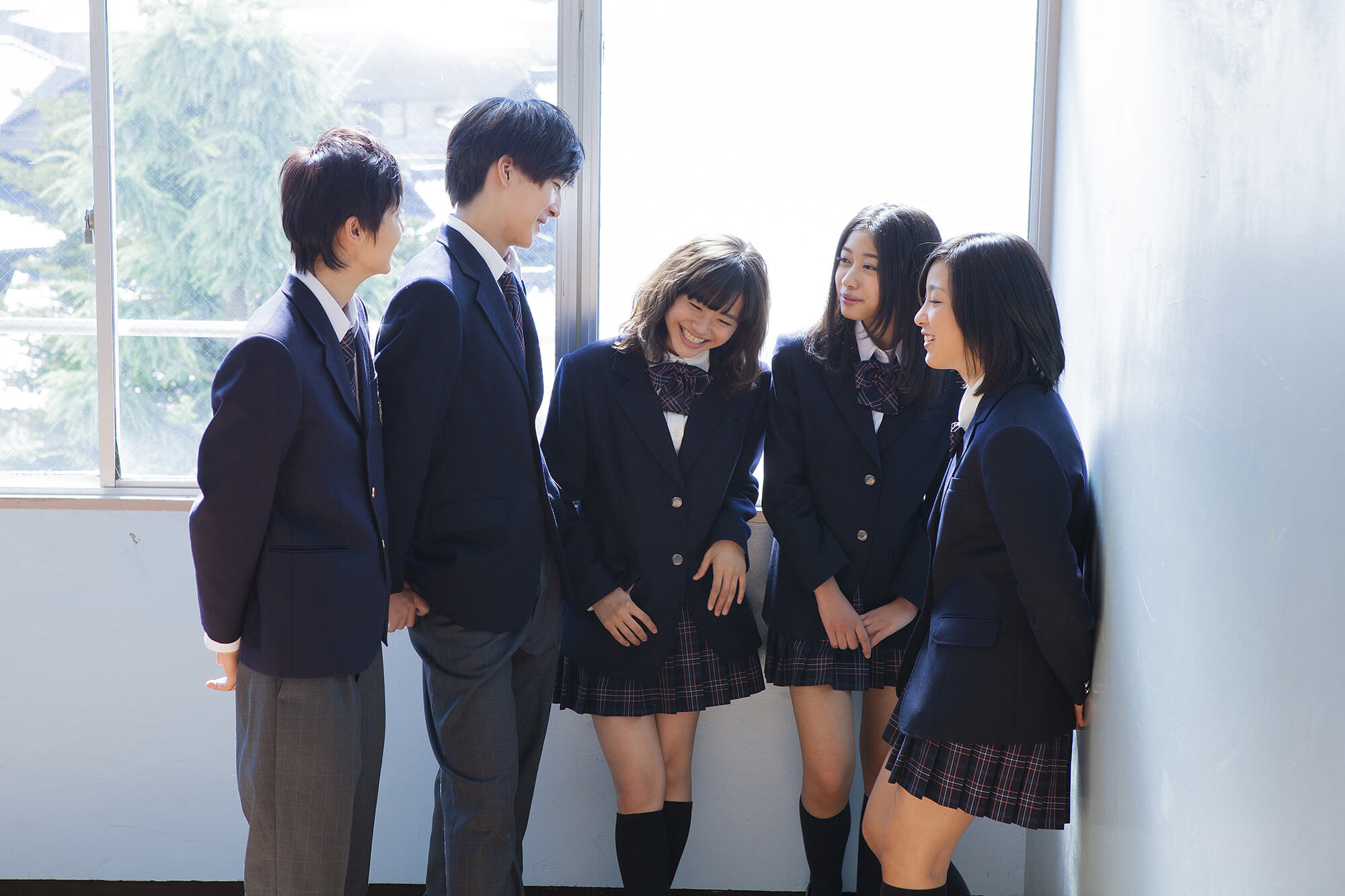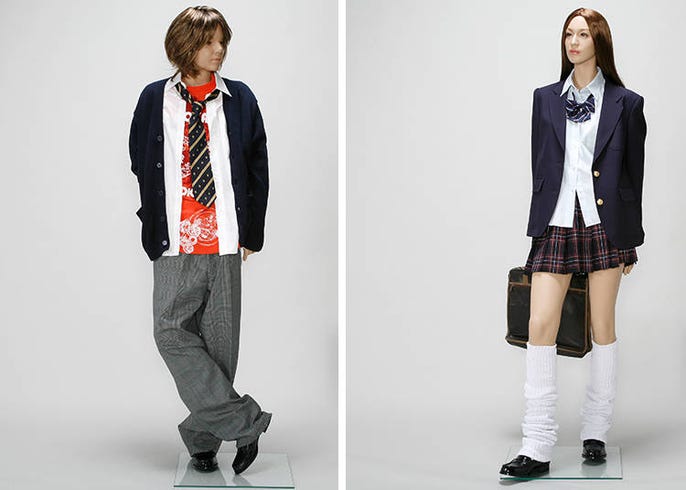Japanese Uniforms - An Overview
Wiki Article
A Biased View of Japanese Uniforms
Table of ContentsSome Known Details About Japanese Uniforms Japanese Uniforms - QuestionsExamine This Report on Japanese UniformsGetting My Japanese Uniforms To Work
Many female pupils put ribbons or ties around the collar. Women normally have 2 or even more variants of ribbons and also ties, transforming them from day to day, depending on the mood.Trainees delight in choosing their favored ones at the store - Japanese uniforms. Some colleges have their very own bags, yet the majority of the instance pupils can use whichever bags they want. Normal school bag in Japan is a handbag-type, constructed out of nylon or natural leather. Those that do sports might make use of enamel bags, and also other pupils make use of backpacks.
While few public primary schools in Japan need uniforms, many independent schools and public schools run by the central federal government still do so. While few public primary schools in Japan require attires, numerous private schools and also public institutions run by the central government still do so. You could likewise have an interest in: School attires are ubiquitous in Japan.
Uniforms help define an institution's identity and also are prized symbols of young people. Consistent using circumstance The response to "I wore an uniform" was 20. 3% for elementary college, 94. Japanese uniforms.
Japanese Uniforms for Beginners


The authorities said "In Japan, they were possibly viewed as charming Western-style youngsters's clothing, as opposed to navy equipment." Seafarer fits were taken on in Japan for women because the attires were easy to stitch. The huge majority of anime go to the very least partially set in Japanese high institutions yet the representations aren't always precise.
The trainees in Japanese institutions are typically better acted and also there are far fewer technique problems than in the United States. Researches have likewise revealed that Japanese pupils typically invest concerning one-third more time discovering each course period than American trainees do. Or are they allowed to put on trousers? Thanks! Usually, colleges with a dress code, which implies pretty much any kind of private institution and also practically all secondary schools, require skirts to be used by women and trousers by children.
 College attires are being reevaluated nationwide. In Japanese society, a method for identifying the leader of a group, be it the leader of an Ouendan or a club or team head of state, is to search for the red armband on the arm. The armband has the name of the group published on it - Japanese uniforms.
College attires are being reevaluated nationwide. In Japanese society, a method for identifying the leader of a group, be it the leader of an Ouendan or a club or team head of state, is to search for the red armband on the arm. The armband has the name of the group published on it - Japanese uniforms.Japanese society mandates that individuals should eliminate their footwear when getting in houses and also other buildings, particularly where the floorings might have rugs, brightened timber floors, or tatami. Uwabaki are light, versatile footwear which are easy to slide on and off, assigned for indoor usage. The kimono is the traditional outfit of Japan.
The Definitive Guide to Japanese Uniforms
Various sorts of robe are worn depending upon the occasion; robes for day-to-day wear are a lot less complex than those for official occasions. Every trainee gets a footwear locker at check the entry, as well as changes from their outside shoes to interior ones when they enter the college. The method of taking your footwear off at the lower step of an entranceway when you go into a structure is called genkan, and is believed to return over a thousand years.College officials was afraid the view of the female neck would sexually delight male pupils. The response: As a policy, no! Tipping is not traditional in Japan. It can be taken into consideration discourteous as well as insulting in numerous situations. The majority of Japanese dining establishments require clients to pay for their meals at the front register, as opposed to leave cash with the steward or waitress.
Not finishing one's dish is ruled out discourteous in Japan, however instead is taken as a signal to the host that a person does not wish to be served an additional aiding. On the other hand, ending up one's dish completely, especially the rice, suggests that one is completely satisfied and also therefore does not wish to be served any more.
 I never ever wore a school uniform as a child yet I always wished I Get More Information did (I'm sure it's a turf is greener circumstance where youngsters who use uniforms want they didn't) (Japanese uniforms). It's not very usual for American children to use college attires unless they're in particular independent schools, but that's not the case worldwide.
I never ever wore a school uniform as a child yet I always wished I Get More Information did (I'm sure it's a turf is greener circumstance where youngsters who use uniforms want they didn't) (Japanese uniforms). It's not very usual for American children to use college attires unless they're in particular independent schools, but that's not the case worldwide.Unknown Facts About Japanese Uniforms
This all may be based on the idea of Japanese people respect exactly how they are taken a look at by others. In the ordinary anime, students use some variation of an institution attire. The majority of Japanese colleges do have an uniform for trainees. However, genuine school attires are far much less fashion-forward than what you see in anime.It was among the most widely used garments for kids as well as was prominent for about a century. It was put on for practically every conceiveable function - Japanese uniforms. Boys in the 19th century did not have big wardrobes so the seafarer suit was put on for both day-to-day battle and dressing up.
Many institutions are rather little, so each go to my site class of students has a single teacher that follows them with their occupation at the college. This educator is held almost as accountable for the kids as a moms and dad would certainly be, both in and out of institution. Loud slurping may be discourteous in the U.S., however in Japan it is considered disrespectful not to slurp.
But to most Japanese, "bloomers" creates precisely what you've explained tiny high-cut health club shorts that hug the body as well as reveal the whole thigh. Component of what's so intriguing concerning your inquiry is that this design of fitness center wear is no much longer made use of in Japanese colleges. With senior personalities, white hair denotes maturity, knowledge, and also self-respect.
Report this wiki page